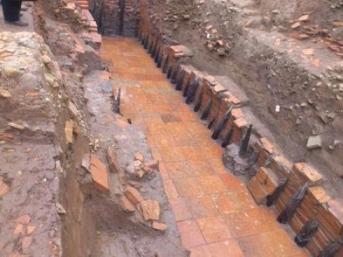The central axis of the Thang Long Royal Citadel, laid at a depth of between 0.5 and 4.2 metres underground for thousands years, consists of overlapping cultural layers ranging from Ly (1009-1226) to Nguyen (1802 - 1945) dynasties.
 Scientists at a seminar on reporting the results of the excavation of the site of the Thang Long Imperial Citadel's central area in Hanoi, made the remark on December 26 about the project, which started in June this year by the Vietnam Archaeology Institute and the Thang Long-Hanoi Heritage Conservation Centre.
Scientists at a seminar on reporting the results of the excavation of the site of the Thang Long Imperial Citadel's central area in Hanoi, made the remark on December 26 about the project, which started in June this year by the Vietnam Archaeology Institute and the Thang Long-Hanoi Heritage Conservation Centre.
Many unique archaeological and architectural vestiges dating back to the Ly, Tran, Le and Nguyen dynasties were unearthed after the excavation.
Prominent among the findings are a water construction and the foundation of a wall running in parallel with the work, both dating back to the Ly dynasty, which were discovered in the Kinh Thien Palace - Doan Mon (The Southern Gate) site.
The water construction, the first of its kind to be excavated in Vietnam, is 2 metres wide and 2 metres high. It was built of brick and was supported by wooden stakes. The archaeologists assumed that it might be used as a water pipeline, a water tank, a tunnel or a spiritual place.
The scientists also unearthed a number of vestiges imbued with architectural characteristics of the Tran, Le and Nguyen dynasties, including decorative objects, a sewerage system and square paving bricks.